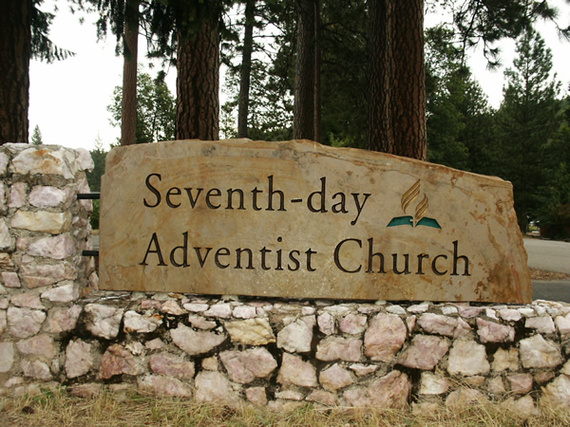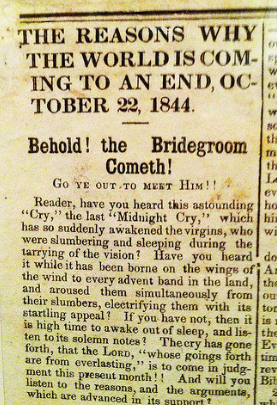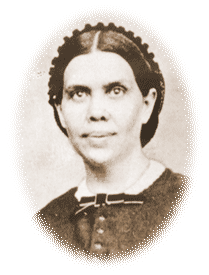I was standing in line at Starbucks this last week where I overheard two fellow patrons discussing presidential candidate Dr. Ben Carson's decision to drop out of the race for the White House. One man said, "Ben Carson is out...he was part of that religion I can never remember." The other man nodded his head and replied, "Seventh-day Adventism...its that weird religion."
The teacher in me, particularly the teacher that is a faculty member at Loma Linda University, one of the premier institutes of higher education associated with the Seventh-day Adventist Church, wanted to invite them to sit down for a brief history of the faith over a hot beverage but they were out the door before my green tea ready. Therefore, I felt a blog post was in order...
Let us travel back to the 1840s, when the Second Great Awakening was in full swing. There was a renewed interest in the phenomenon of Biblical prophecy amongst Protestants which may have stemmed from the arrest of Pope Pius VI in 1798. Many Protestants saw this event as the moment which marked the end of the 1260-day prophecy from the Book of Daniel and had them looking to the 2300-day prophecy found in Daniel 8:14.
Out of the Second Great Awakening came a group known as the Millerites, the movement that eventually led to the formation of the Seventh-day Adventist Church had its genesis in a group of adherents to a belief espoused by a farmer named William Miller (hence the moniker Millerites), who became increasingly influential in the 1830s and early 1840s. Primarily from New England, these believers were mostly members of Baptist, Methodist and Presbyterian churches. But they found Miller's ideas compelling.
William Miller, after years of study and interpreting the Bible, concluded that the prophecy in Daniel 8:14 was a message written especially for the people living in the latter days, just prior to the Second Coming. He felt that he could calculate the approximate time of the Lord's Second Coming. Using the 2300 days referred to in Daniel 8:14 and calculating the time based on the idea that a day in prophecy should be interpreted as a calendar year and using 457 BCE as a starting point, he concluded that Christ's Second Coming was going to occur sometime in 1843. He later amended that to sometime during the Jewish calendar year that corresponded with the Gregorian calendar year, which fell sometime between March, 1843 and March of 1844. Miller himself refused to set an actual date. He stated only that the Second Coming would occur sometime during that period. Yet, as human nature is generally not satisfied with ambiguity the Millerites wanted a specific date.
Attempting to appease the believers, several dates were singled out by leading members of the movement, based upon their own calculations. Those dates came and went without any sign of the Second Coming. The beliefs of many were shaken as each date passed without occurrence, but their desire was still strongly leaning towards wanting to believe that Christ's return was imminent. Finally, a follower of Miller named Hiram Edson employed somewhat convoluted calculations to arrive at the precise date of October 22, 1844. Being very near the end of the window that Miller established, this date was accepted and anticipated with great fervor by the group.
When October 22, 1844 passed and Christ did not return, many of the believers, quite of few of which had made no plans for the possibility that they could be wrong once again, lost their faith and left the movement. Some even rioted in a number of towns in New England. However, many clung to the belief that the Second Coming was imminent.
On the morning of October 23, Hiram Edson was passing through his grain field in Port Gibson, New York with a friend. He claimed he had a vision from God in the field telling him that the date was not wrong, the date just signified something different. October 22nd was the date on which the Lord would begin determining who would be taken to heaven at the Second Coming not the day of the Lord's return.
Meanwhile a young Seventh Day Baptist girl by the name of Rachel Oakes Preston living in New Hampshire was responsible for introducing the concept of the Jewish Seventh-day Sabbath to the Millerite Adventists. It is thought that primarily because of her, Frederick Wheeler, a local Methodist-Adventist preacher, began keeping the seventh day as Sabbath, probably in the early spring of 1844. Several members of the Washington, New Hampshire church also followed his lead and began to observe the Seventh-day Sabbath.
Joseph Bates, yet another prominent early member of what would become the Seventh-day Adventist faith, proposed that a meeting should be organized between the believers in New Hampshire and Port Gibson. At this meeting, which took place some time in 1846 at Edson's farm, Edson and other Port Gibson believers accepted the Jewish Seventh-day Sabbath and at the same time forged an alliance with Bates and a New Hampshire couple who later became very influential in the Adventist church, James and Ellen White. Between April 1848, and December,1850, 22 "Sabbath conferences" were held in New York and in other New England towns. These meetings were opportunities for leaders such as James White, Joseph Bates, Stephen Pierce and Hiram Edson to discuss and doctrinal issues. They agreed that the date of October 22, 1844 was significant, and that is was the start date to the countdown to the Second Coming.
That young New Hampshire woman mentioned earlier would serve a pivotal role in what happened next in the formation of the church. Ellen Gould White, a follower of Miller since 1840, began to proclaim she was receiving visions from God.
Ellen White championed the idea that Christ would not return until the original Jewish Sabbath was recognized. Saturday was the Sabbath, changed by the Roman Empire to Sunday to make it easier to convert Western European tribes who were Sun worshippers. White proclaimed that this was a grievous mistake that must be corrected before Christ would return. Thus, the origin of the Church name lies in these two fundamental beliefs. First, the Jewish Saturday Sabbath, or "Seventh-day Sabbath", must be reinstated and observed. Second, mankind was living in the latter days and Christ's Second Coming, or "Advent", was close at hand.
By 1860 followers of this belief system were calling themselves Seventh-day Adventists but it was not until 1863 in Battle Creek, Michigan that they officially proclaimed themselves to be a new church.
Clearly there is much more to say about a denomination that now, over one hundred and fifty years later, has some seventeen-million adherents and has developed its own distinctive cultural tapestry but perhaps even this much detail would have been too much to spring upon two unsuspecting Starbucks patrons.
.



